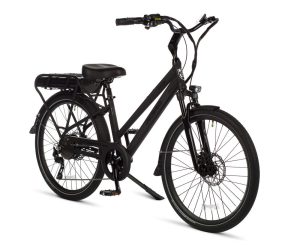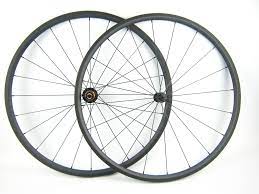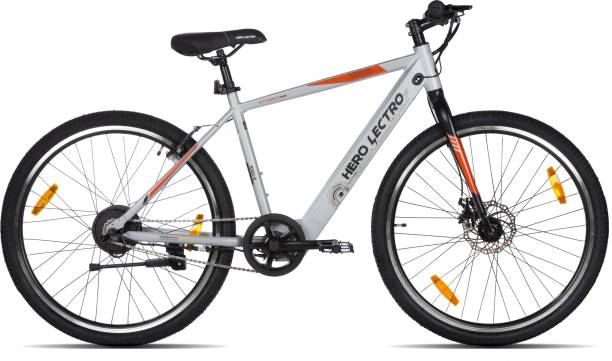Have you ridden an electric bike before? If you have, you must be aware of the great experience of riding on difficult trails without the need to paddle a lot.
E-bikes are becoming the new trend for both commuters and sportsmen. Many cycling enthusiasts have switched from non-assisted bikes (regular bikes) to e-bikes mainly for ease and affordable cost. You can easily get an e-bike by paying 40-50% more. Plus, it’s eco-friendly. So why choose a regular bike?
With many companies stepping into improving e-bike technology for sports and the daily commute, the next decade will likely see the surge in the use of EV (Electric Vehicle) over fuel-powered engines.
NPD Group (NDP.com) in 2019 reported that,
Electric bike sales jumped by an incredible 91% from 2016 to 2017 alone. It is believed to top 40 million sales annually by 2023.
Let’s talk about an electric bike, the precursor in EV, and what makes it so fabulous.
What Is An Electric Bike?
Electric Bikes or E-bikes are basically battery-powered bicycles that are designed to complement your pedaling. They are regular bikes with the addition of an electric motor, a battery, and a controller.
How does it start? Well, it starts by either pedaling or throttle. E-bikes incorporate the concept of ‘torque sensor’ or ‘cadence sensor.’ The torque measures how hard you push on the pedals while cadence measures if you push on the pedals.
Almost every e-bike comes with the function to set either low assistance or high assistance so your bike can give power in proportion to your pedaling.
The electric bike technology is based on three different components.
- Electric Motors – A hub-drive motor to help deliver power.
- Batteries – Lithium-ion batteries.
- Controllers – Throttle or pedal assist.
An Electric bike accommodates different riding experiences including
- Short commutes to school or work. E-Bike can help save money on gas and avoid traffic.
- Fitness or sporting activities such as uphill or long-distance riding. It helps to accelerate faster without burning out.
- Helping injured people to slowly transit back into regular cycling.
- Those without a driver’s license.
- For a fun ride! People who enjoy riding bikes on different terrain for exercise or just for fun.
The Benefits of an Electric Bike
There are many benefits to riding an electric bike. Along with saving money on gas and protecting renewable energy, it offers many other benefits.
- The rider doesn’t require a driver’s license, registration, or insurance to ride.
- It’s environmentally friendly with zero emissions.
- It’s easy to carry or park in places with traffic congestion or limited space.
- It’s great for sporting activities such as uphill biking, tandem, and long-distance races.
- It provides a chance to go out and exercise your legs.
The Electric Road Bike
Electric Road Bikes are often referred to as the ‘e-road bikes.’ First invented in 1993, they became the newest bike genre designed for riding.
Many riders have a misconception that e-bikes are only meant for lazy riders. It’s far from the truth! E-road bikes offer assistance to pedaling while making the ride less fatiguing for the biker. It becomes very useful when riding uphill.
Although a road bike, they’re incorporated with ‘assisted pedaling’ to help ride faster, climb elevations, and cover long distances. Because of their sleek design, light-body, bolted-on motor, and smartly integrated battery; they remain indistinguishable from the non-assisted road bikes.
You can find e-road bikes ranging from commuters road bikes, MTBs (Mountain Bikes) to cargo bikes.
When set at a high assistance mode, it boosts the pedaling acceleration to help climb faster. A low assistance mode is more common on a leveled asphalt road.
Types of Electric Bike
Because of its popularity in usage for various purposes, an electric bike is categorized into three groups.
Type 1: Pedal-Assist E-Bikes
As the term suggests, pedal-assisted E-bikes are solely based on the concept of pedaling to regulate the electric motor. Also known as ‘assisted riding,’ the pedal-assist minimizes the efforts of the rider when they are pedaling to ensure they don’t burn out.

E-bikes with pedal-assist only are again classified into either Pedelecs or S-Pedelecs.
- Pedelecs, legally classed as bicycles, have pedal-assist only with motor power up to 250 watts. They can go from a decent speed to not excessive speed of usually 25 km/h. These e-bikes are known as the Pedelecs. Like e-road bikes, they have a built-in sensor to detect the pedaling speed and force to assist the rider.
- S-Pedelecs, legally classed as mopeds, have pedal-assist only but the motor power can be greater than 250 watts. Unlike Pedelecs, they can attain a higher speed usually 45 km/h. They’re often regarded in many countries as moped or motorcycles.
Type 2: Pedal-Assist and Power on Demand
These types of e-bikes incorporate the concept of both pedal-assist units (Pedelecs) and Power on Demand (throttle). The bike may include a pedal-assist system with or without throttle. This may allow the rider to pedal alongside the electric motor to increase distance per charge.
Type 3: Only Power On-Demand
In contrast to pedal-assist bikes, Power-on-Demand bikes are activated by a throttle. They have the option of using a throttle instead of pedaling which is the same as the scooter or motorcycle. The motor is activated by a throttle mounted on the handlebar.
With power-on-demand only e-bikes, the rider can choose to
- ride by pedal power alone.
- ride by the electric motor alone.
- Or, ride using both together at the same time.
Factors to Consider in Buying an Electric Road Bike
Torque
The torque in an e-bike is the ability to rotate the rear wheel. The higher the torque, the faster and easier the bike will go. E-bikes are designed with the concept that the higher torque will rotate the wheel easier and create more acceleration.
Why does an e-bike need torque?
Torque in an e-bike measures how hard you’re pedaling. In contrast, the cadence in e-bike measures if you’re pedaling. With more torque, you can minimize pedaling while covering more ground quickly. In electric bikes, you will either read about torque in Metric Units (Newton Meters) and US units (inch-pounds) or foot-pounds.
Motor
The motor is one of the vital components of an e-bike. With the power harnessed from the battery, the motor helps to generate torque which is then managed by a controller. Most e-bikes use motors from brands such as Bosch, Yamaha, and Shimano. You can also find eMTBs using motors from Ebikemotion and Fazua.
The motors designed for eMTBs are surprisingly light while offering great power between 250w and 500w.
Battery
The battery is the main unit of an e-bike. The rider harnesses power from the existing battery unit in their e-Bike which is then supplied through a motor and managed by a controller. The early battery units in e-Bikes were large and heavy but with time and upgrade the manufacturers found a way to integrate batteries into the frame of the bike seamlessly.
Its power is measured in watt-hours (Wh). The distance covered by a certain Wh-powered battery can vary greatly depending on the level of boost, the terrain, and the weight of the rider.
When it comes to the charging cost of the battery, do find the battery voltage and amp hour rating of the eBike. For example, a 36V 10Ah battery has 360 watt-hours, or 0.36-kilowatt-hours (kWh). You can use this information to ascertain the electricity cost for fully charging the battery.
Cost
Thanks to the competition among the manufacturers, you can usually find e-bikes in the market ranging from $400 to $2000.
The most expensive e-bikes can range anywhere from $10,000 to $150,000. However, a basic commuter e-road bike or an advanced eMTB wouldn’t cost more than $10,000 to $12,000.
Weight
The weight of an e-bike may differ depending on the brand of the e-bike and its price. While you can usually get e-bikes weighing as much as 45-50 pounds (18-22kg), the lightest and most advanced eMTBs may weigh only as much as 38 pounds (17kg).
The weight of an e-Bike becomes more important for the uphill or long-distance bikers, while the regular commuters can go with common eBikes with regular weight.
Frame
Like regular bikes, e-Bikes frames are designed using aluminum (alloy), steel, or carbon fiber. Most e-bikes are made from an alloy which helps to keep the manufacturing cost to the minimum. Many e-bike frames are often combined with both carbon and steel. Many expensive e-bikes are completely made out of carbon or steel.

When it comes to durability, the alloy frames are prone to develop micro-cracks and weakness. Steel on the other hand could retain its strength and position despite being pliable.
Steel is good when it comes to absorbing and minimizing the vibration compared to both alloy and carbon frames.
Gearing
E-bikes have multiple gears just like regular bikes. The principles for using the gears remain the same as the regular bikes but with a slight difference.
On an e-bike, you must use the left gear shifter to change electric assist levels and the right gear shifter to change mechanical gears.
Gears are the same as speed – where 24 gears is a 24-speed bike. Electric bikes generally have 1, 3, 18, 21, 24, 27, 32, or even 40 speeds.
Wheelset

E-bikes can use both traditional bicycle wheelsets and specially designed e-bike wheelsets. E-bike wheelsets have an ultra-durable set with tough rims, reinforced hubs, and specialized tubing. DT Swiss and Mavic Wheels are two popular e-bike wheelset brands. Mavic wheels are specially designed for e-MTBs for their strength and durability over challenging terrains.
Maintenance
Like regular bikes, it will cost you to maintain your e-bikes. A tune-up every six months or after 500 miles) is recommended which can cost anywhere between $75 and $100. Patching a flat tire may cost between $10 and $20, and brake adjustments could cost $20-35.
